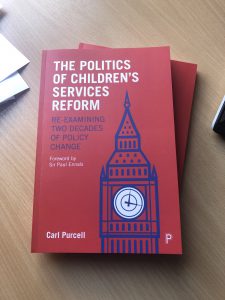 Carl Purcell, of the Health and Social Care Workforce Research Unit, King’s College London, reflects on a recent meeting of the Social Work History Network (17 June 2024). (791 words)
Carl Purcell, of the Health and Social Care Workforce Research Unit, King’s College London, reflects on a recent meeting of the Social Work History Network (17 June 2024). (791 words)
At a recent seminar organised by the Social Work History Network Dr Michael Lambert, Professor June Thoburn and Professor Marian Brandon reflected on the history of the concept child ‘neglect’ and how this has been redefined and responded to by policymakers and social workers.
The evacuation of children from towns and cities during the second world war exposed the appalling suffering of many children living in desperate poverty. Lady Allen of Hartwood was spurred to write a letter to The Times that provoked a remarkable political response. Following the Curtis Report (1946), and subsequent inquiries, the Children Act 1948 established local authority Children’s Departments to make arrangements when children, including neglected children, needed to be received in to care. Subsequently, the Children and Young Persons (Amendment) Act 1952 provided powers to actively investigate neglect.
Many health and social work professionals working in this space located the underlying causes of neglect in the personal characteristics of parents. Jones wrote: “Their lives are characterised by dirt, disintegration and disorder. They are often shiftless, apathetic, irresponsible to an almost incredible degree”[1]. But some social policy writers were critical of this perspective. Barbara Wootton argued: “About the only common characteristics of these families, it seems, are the financial ones”[2]. Continue reading
